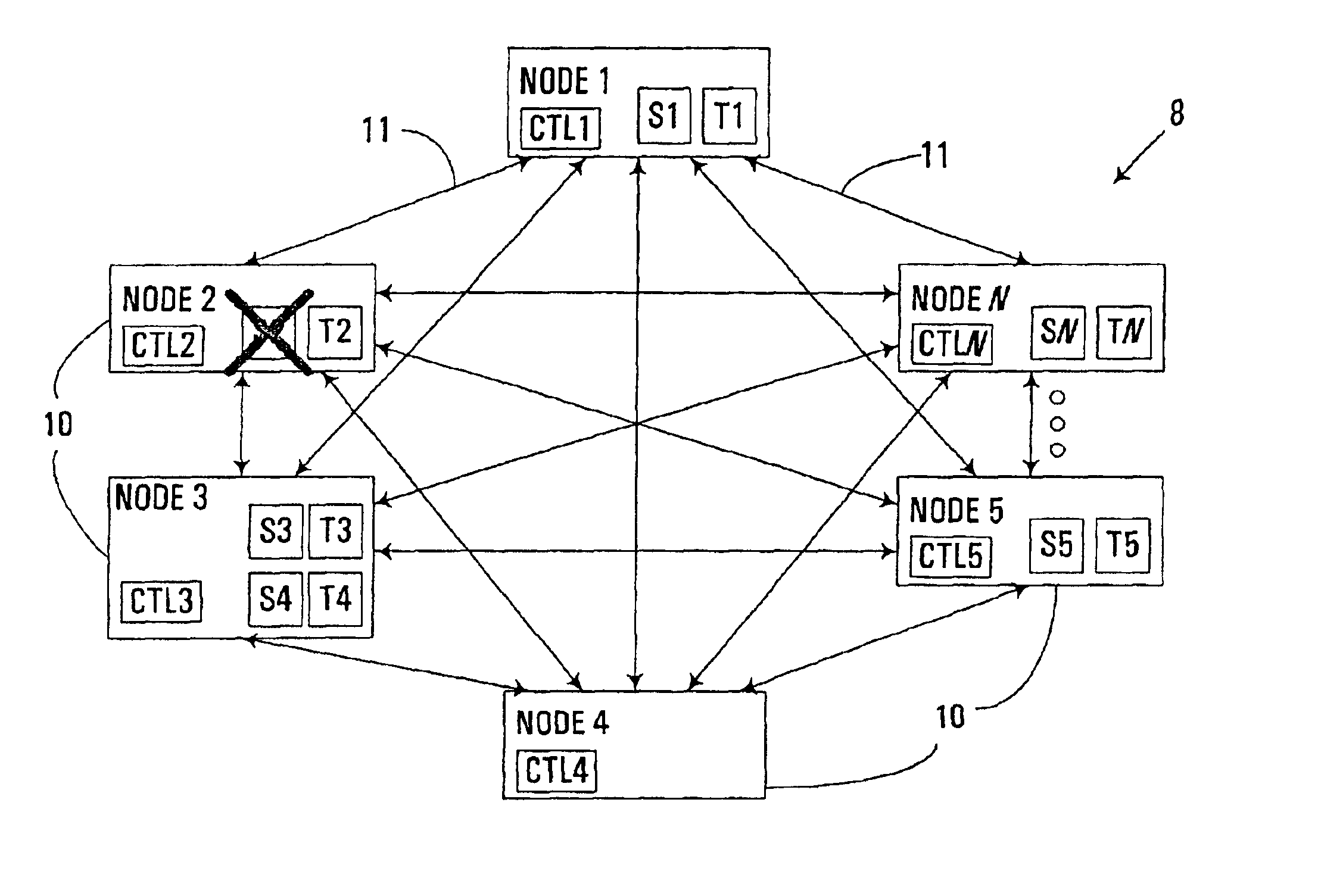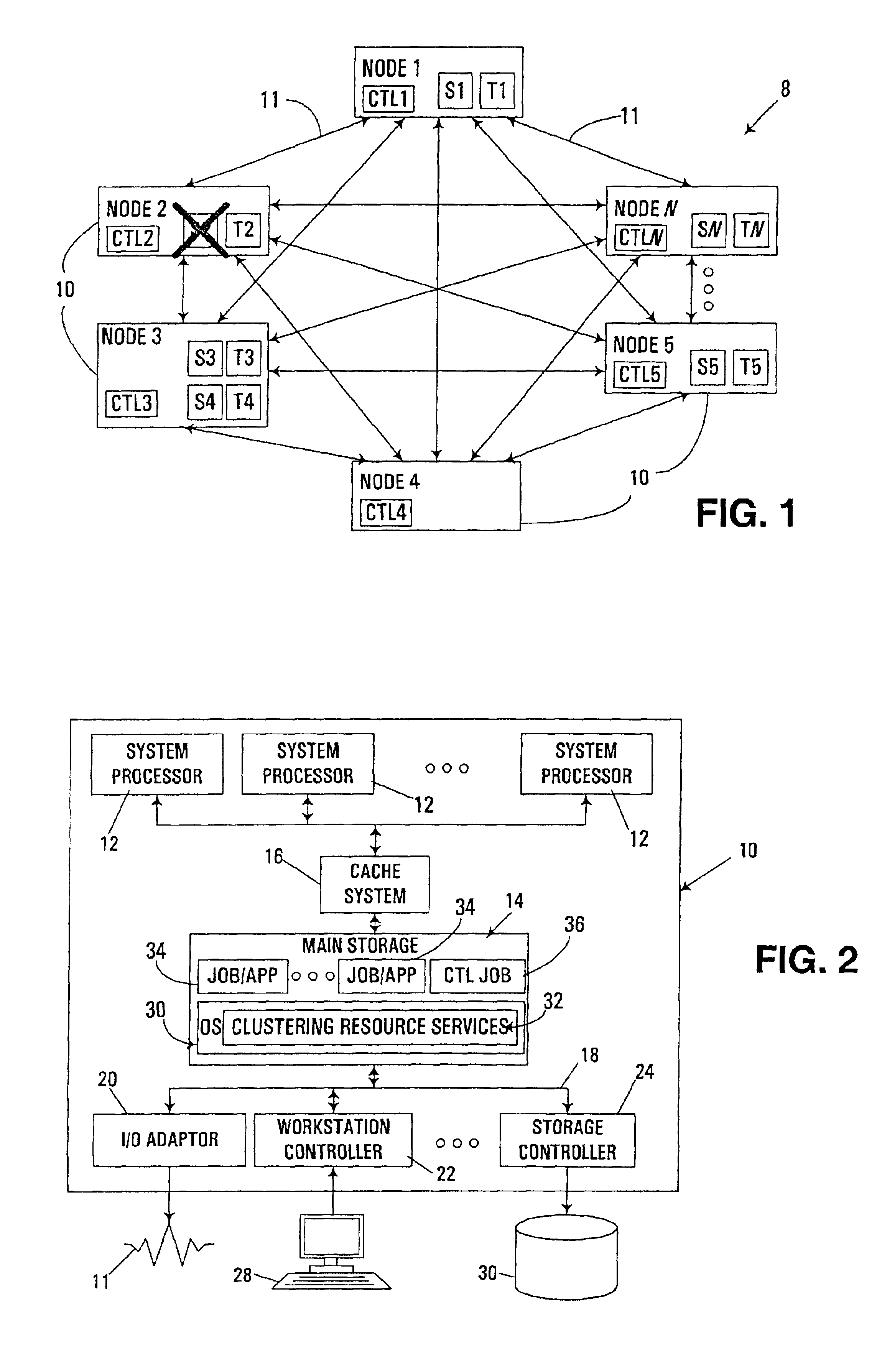Node shutdown in clustered computer system
a computer system and node technology, applied in the field of clustered computer systems, can solve problems such as failure detection, member change, and failure to register itself from its own system, and achieve the effect of detecting failure, detecting errors, and detecting failures
- Summary
- Abstract
- Description
- Claims
- Application Information
AI Technical Summary
Benefits of technology
Problems solved by technology
Method used
Image
Examples
Embodiment Construction
[0023]The embodiments described hereinafter utilize a member job resident on a node in a clustered computer system to initiate an ordered and automated shutdown of that node with little or no operator intervention, and with automated handling of dependent group failovers. In many respects, the automated node shutdown functionality described herein may be considered to effectively convert a member leave membership change protocol that would conventionally occur in response to a member-detected failure into a node leave membership change protocol. As a result, the automated handling of dependent failovers that is conventionally performed for node leave membership changes may effectively be utilized to handle member-detected failures on a node in an orderly and efficient manner.
[0024]Typically, a shutdown is desirable to permit a “failover” to occur, i.e., to permit access to a resource to be switched from one node to another. As discussed above, one difficulty associated with handling...
PUM
 Login to View More
Login to View More Abstract
Description
Claims
Application Information
 Login to View More
Login to View More - R&D
- Intellectual Property
- Life Sciences
- Materials
- Tech Scout
- Unparalleled Data Quality
- Higher Quality Content
- 60% Fewer Hallucinations
Browse by: Latest US Patents, China's latest patents, Technical Efficacy Thesaurus, Application Domain, Technology Topic, Popular Technical Reports.
© 2025 PatSnap. All rights reserved.Legal|Privacy policy|Modern Slavery Act Transparency Statement|Sitemap|About US| Contact US: help@patsnap.com



